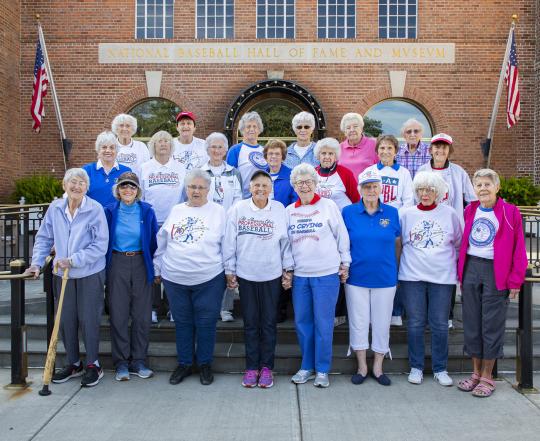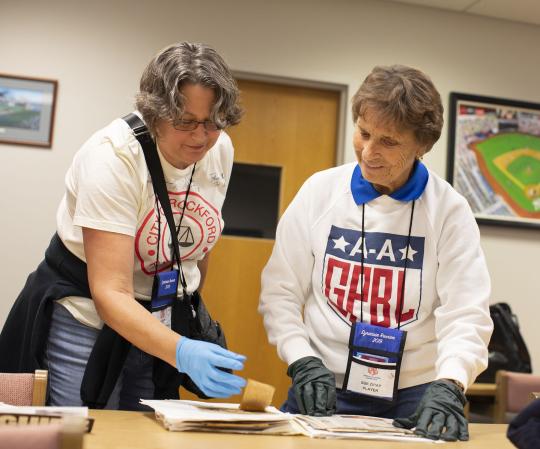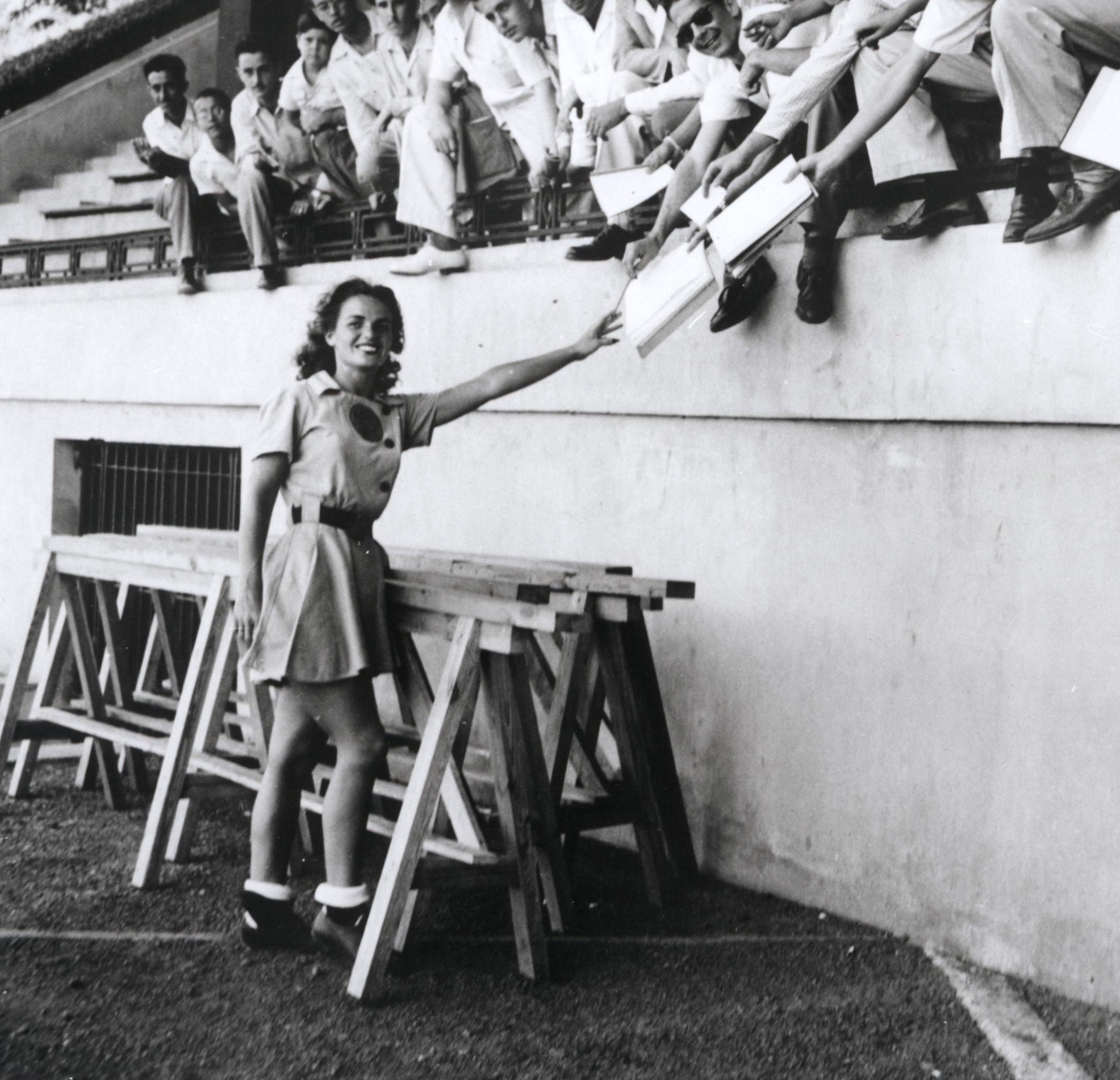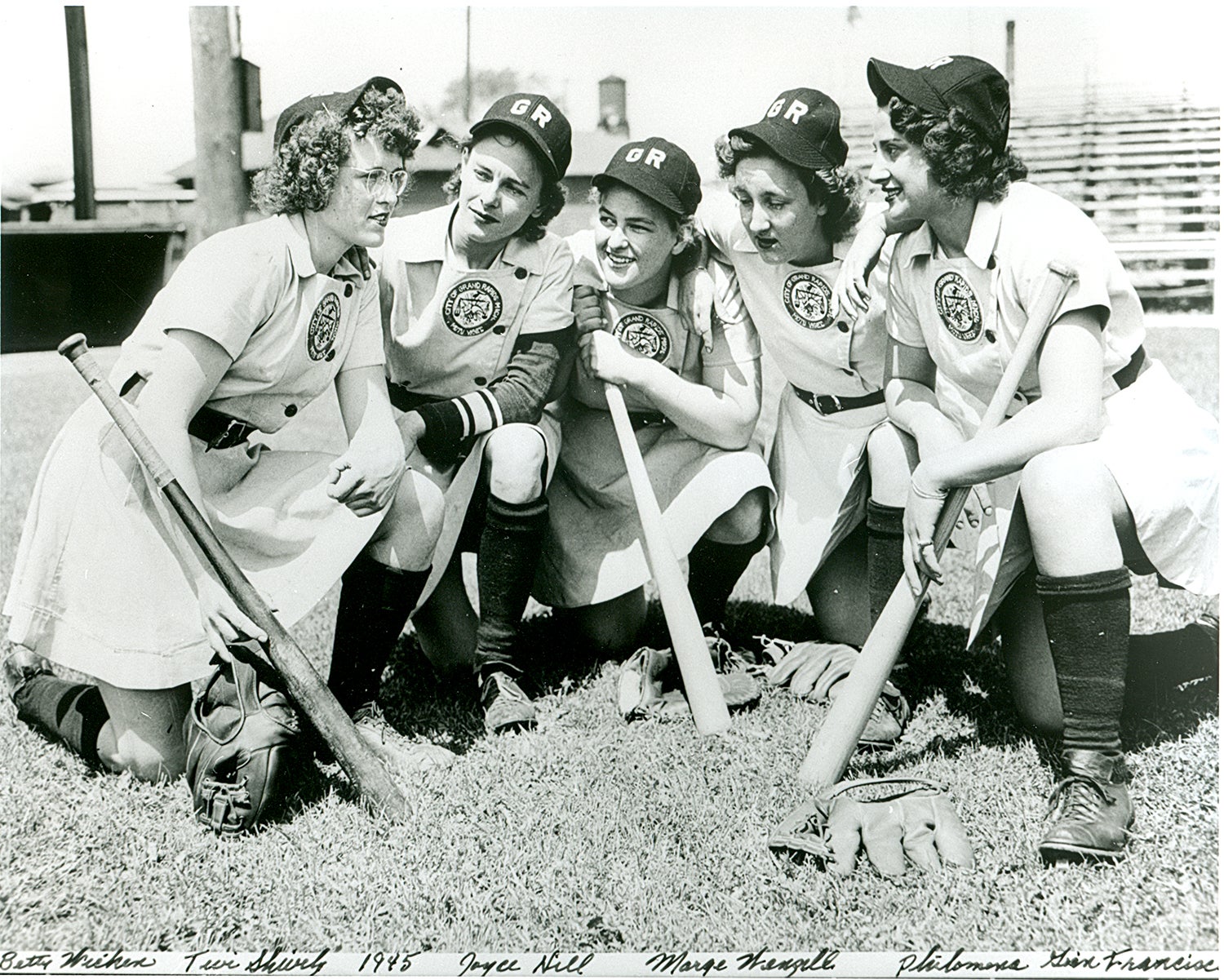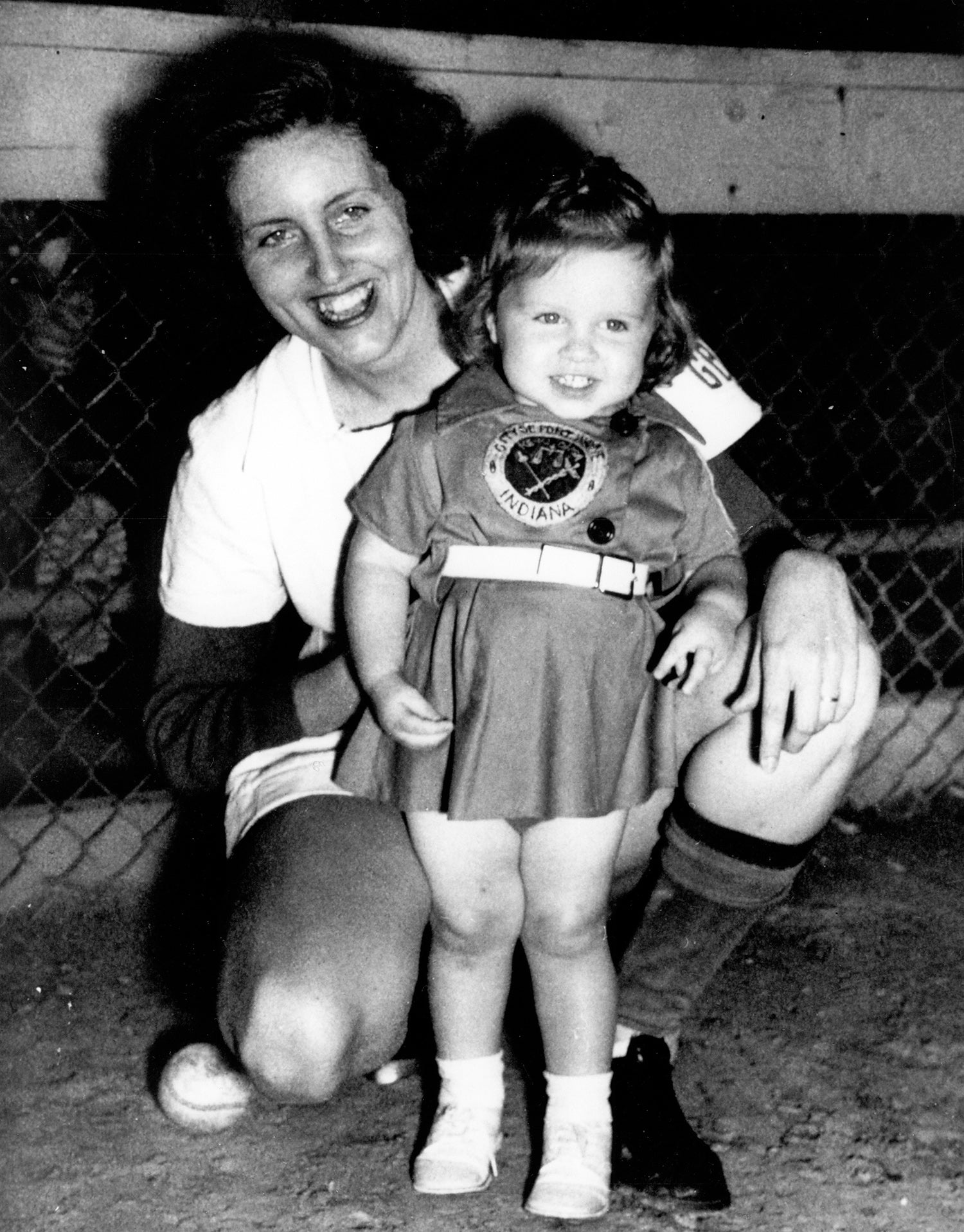- Home
- Our Stories
- AAGPBL reunion brings timeless stories to Cooperstown
AAGPBL reunion brings timeless stories to Cooperstown
For nearly two dozen women, true trailblazers in the annals of baseball history, a trip to Cooperstown is a homecoming.
These women with their unique histories played in the All-American Girls Professional Baseball League, an upstart loop in the Midwest whose tenure from 1943 to 1954 that coincided with the outbreak of World War II. And though their numbers are dwindling, these women, inspiration figures that gained enormous fame due to the 1992 film A League of Their Own, remain steadfast in their loyalty to the game and each other.
Official Hall of Fame Apparel
Proceeds from online store purchases help support our mission to preserve baseball history. Thank you!
Hall of Fame Membership
There is no simpler, and more essential, way to demonstrate your support than to sign on as a Museum Member.
On Friday, Sept. 20, two buses arrived at the National Baseball Hall of Fame and Museum with 22 former AAGPBL players and dozens of guests. The contingent made the 90-mile trek from Syracuse, where the 2019 AAGPBL reunion was being held from Sept. 18-22.
“These women have been such an integral part of the National Baseball Hall of Fame dating back to when we opened our first women in baseball exhibit. On that day in 1988, more than 150 former All-American Girls were here to help us,” said Hall of Fame Chairman Jane Forbes Clark in welcoming the group inside the Museum’s Grandstand Theater after taking a late-morning group photo on the steps of the Museum. “In 2006, we expanded that exhibit by opening Diamond Dreams, a more comprehensive permanent exhibit detailing every facet of the continuously emerging role of women in baseball that began with the All-American Girls Professional Baseball League. Also that year we dedicated a statue in the park outside the library in their honor called Woman at Bat.
“Diamond Dreams has become an inspirational focus for our millions of visitors. And the All-American Girls themselves have been such an important part of the fabric of the Hall of Fame. But most importantly, we feel that they have been critically important to the history of this country.”
Before a rapt audience that also included more than 100 students from three local high schools, Clark shared the AAGPBL’s origin story that began with men being drafted into the armed services during WWII and industries across America – including baseball – were losing their workforce.
Ultimately, President Franklin Roosevelt wrote in his famed “Green Light Letter” that it would be best for the country to keep baseball going as a welcome distraction to the difficulties of wartime life.
“The All-American Girls Professional League was founded for the same reasons,” Clark said. “And what began as a diversion from the horrors of wartime resulted in so much more. The All-American Girls Professional League became a successful, competitive and fun sports league with more than 600 women given a chance to play baseball at a professional level for 12 years.
“These women played hard, they played to win, and their skill on the field drew thousands of fans to their games. In 1948 alone, almost one million people went to see these ladies play. They played to inspire our country in those difficult times and ended up inspiring future generations of ballplayers and leaders on the field and off the field. Within the Hall of Fame, the legacy of these women remains so strong and their pioneering spirit continues to educate.”
It was during this reception that a local trio provided a musical interlude, performing “Victory Song (“For we’re the members of the All-American League/We come from cities near and far;”)” made famous in A League of Their Own.
In a series of interviews during the day, many of the AAGPBL players talked about their special time more than six decades ago when they claimed their spot as baseball pioneers.
“Other than having my two children, it was the best years of my life,” said Sarah “Salty” Ferguson, a catcher and outfielder for the Rockford Peaches in 1953-54. “I met a lady on the street and she said, ‘Salty, how are you doing?’ I told her, ‘My knees are shot and my hips are shot playing catcher.’
And she said, ‘Boy, I bet you’re sorry you did that.’ I looked at her and said, ‘What are you talking about? I had a childhood dream and I never gave up on that dream. The good man upstairs put the love of the game in me. He gave me the talent to play and then he saw fit to fulfill that dream.’
“Today, when I give a kid one of my baseball cards, I write on it, ‘Always follow your dream.’”
Maybelle Blair, a pitcher with the Peoria Redwings in 1948, joked about her confidence entering the AAGPBL and wearing the skirted uniform.
“They knew I was Mike Trout coming in so I had no problem,” she said with a smile. “Seriously, I enjoyed it thoroughly. I couldn’t hardly wait to get that little dress on. I got it on and I thought I was the cutest thing that God ever made. Then when I put my spikes on I KNEW I was.
“When you put on those spikes and you walk on cement it clicks, clicks, clicks. There’s nothing sweeter in my ears as to hear somebody walk on cement with spikes. Clickety-click, clickety-click. Music to my ears. And I marched out to that music to the ballfield and I thought, ‘Oh Maybelle, you are a professional ballplayer.’”
Jeneane Lesko, a pitcher with the Grand Rapids Chicks during the AAGPBL’s final two seasons, had a different reaction to the skirts the players had to wear, saying: “When I first saw them I didn’t know they played in skirts.
I just kept saying, ‘Oh, I can’t do that.’ I never wore skirts. I wore jeans to school all the time. I was the tomboy of the town. It just wasn’t what I did. But I told myself if I wanted to play baseball I had to go out there. And after I started pitching I really loved it … I felt really free.”
Shirley Burkovich, an all-round player with a few teams in the late 1940s and early 1950s, made her AAGPBL debut at 16.
“All I ever played with was with the boys on the vacant lots and in the street. So when I got down to the first spring training and saw all these girls I thought to myself, ‘Gee, come to think of it, this is the first time I’ve ever played with girls,’” she said. “Actually, my mom came with me because she wasn’t going to let me go down alone because she said she had never heard of an All-American Girls Professional Baseball League and wasn’t sure about sending a 16-year-old girl down. She came with me and met the manager and the chaperone and they assured her it was all on the up and up.”
Lois Youngen, who caught Jean Faut’s perfect game for the South Bend Blue Sox in 1953, added, “Like, I think, most of the players in the league, I grew up playing with the boys in the neighborhood. They gave me a choice – they said I could either play right field or I could catch. That was a no-brainer. So I told them I’d learn to catch. My dad had been a college pitcher so he’d stand me up against the garage door and he’d throw. That’s how I became a catcher.”
Pitcher Dolly Ozburn, a pitcher in the AAGPBL from 1952-54, began with baseball playing with boys in Charlotte, N.C.
“We didn’t have Little League, so we got our own team together. A friend of ours owned a sporting goods store and started a league in the county and I played in that since I was 10 years old,” she said. “Later I went to a baseball game and I saw a sign there about women’s baseball. I went home and told my dad, ‘I’m going to try out for a baseball team.’ And he said, ‘Have at it. Have fun. Go try it.’ I did try out and they told me I was too small and too young. I tried out the next year when I was 14 and signed with Jimmie Foxx’s team, the Fort Wayne Daisies.
“I had never been away from home in my life. My mom thought I’d get homesick and come home, but I guess I faked my mom out because I didn’t.”
Bill Francis is the senior research and writing specialist at the National Baseball Hall of Fame and Museum


